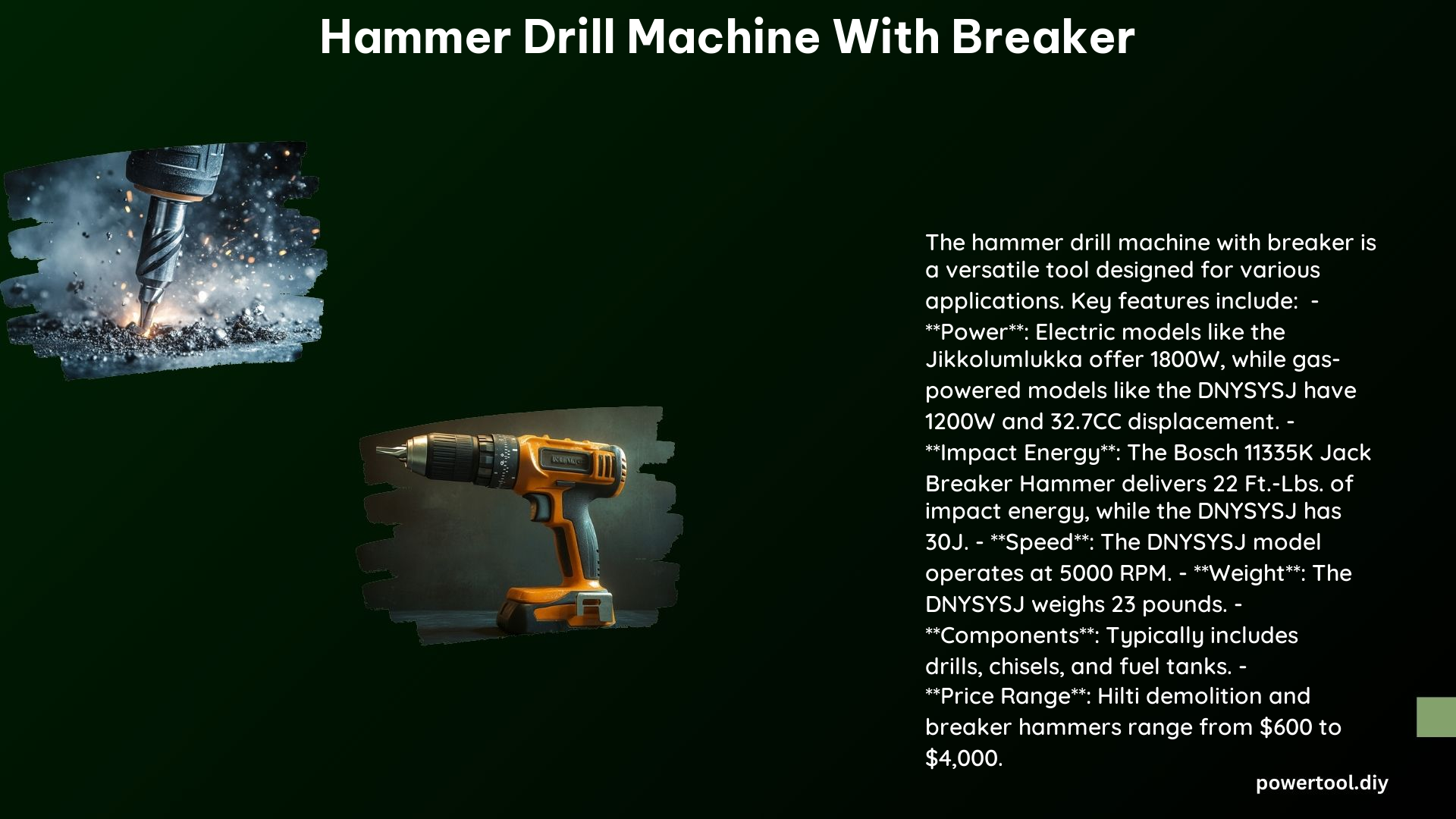A hammer drill machine with a breaker is a versatile power tool designed for a wide range of construction, demolition, and masonry tasks. These machines combine the functionality of a hammer drill and a demolition breaker, making them a valuable asset for professionals and DIY enthusiasts alike. In this comprehensive guide, we’ll delve into the key features, technical specifications, and the primary differences between hammer drills and rotary hammers, as well as their role in concrete demolition tasks.
Key Features of Hammer Drill Machines with Breakers
Multi-Functionality
Hammer drill machines with breakers are designed to handle a variety of tasks, including drilling, hammering, and breaking through tough materials like concrete, masonry, and stone. This versatility makes them a valuable tool for construction, renovation, and demolition projects.
Power Source
These machines can be powered by either electricity (corded or cordless) or gasoline, depending on the model and brand. Corded electric models typically offer higher power output, while cordless and gasoline-powered models provide greater mobility and flexibility on job sites.
Impact Energy
The impact energy of hammer drill machines with breakers can range from 22 Ft.-Lbs. to 30J, depending on the specific model. This impact energy is a crucial factor in determining the tool’s effectiveness in breaking and drilling through different materials.
Speed and Torque
Hammer drill machines with breakers can reach speeds of up to 5,000 RPM, and their torque can be as high as 1.5N.m. This combination of speed and torque ensures efficient drilling and breaking performance.
Accessories
These machines often come with a variety of accessories, such as different drill bits, chisels, and fuel tanks, which enhance their functionality and versatility. These accessories can be tailored to specific job requirements, making the hammer drill machine with a breaker a highly adaptable tool.
Technical Specifications

Power
Electric hammer drill machines with breakers typically have a power output ranging from 1,200W to 1,800W, while gasoline-powered models can have a displacement of up to 32.7CC.
Engine Type
Gasoline-powered hammer drill machines with breakers often feature a single-cylinder, air-cooled, 2-stroke engine.
Impact Frequency
These machines can deliver an impact frequency of up to 3,200 min-1, ensuring efficient breaking and drilling performance.
Fuel Mixture Ratio
Gasoline-powered models typically require a fuel mixture ratio of 25:1 (gasoline to motor oil).
Fuel Tank Capacity
The fuel tank capacity for gasoline-powered hammer drill machines with breakers can be up to 0.9L/0.2gal/30Oz.
Noise Level
The noise level of these machines can reach up to 104dB, so proper hearing protection is essential when operating them.
Weight
Hammer drill machines with breakers typically weigh approximately 10.5kg/23lbs, excluding the drill bit or other attachments.
Primary Difference Between Hammer Drill and Rotary Hammer
Hammer Drill
Hammer drills are primarily designed for drilling and light hammering tasks, with less impact energy and lower torque compared to rotary hammers.
Rotary Hammer
Rotary hammers are specifically designed for heavy-duty hammering and breaking tasks, with higher impact energy and torque, making them more suitable for tasks like concrete demolition.
Function in Concrete Demolition Tasks
Efficient Breaking
Hammer drill machines with breakers are highly effective in breaking through concrete due to their high impact energy and torque, making them a valuable tool for concrete demolition and removal.
Drilling Capability
In addition to breaking, these machines can also drill through concrete, allowing for the creation of anchor points or other necessary openings in concrete structures.
